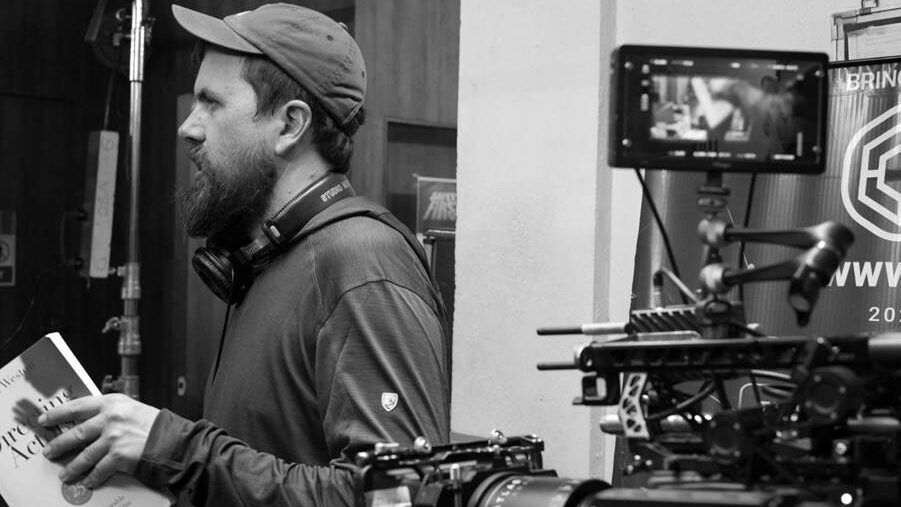Director Peter Zerzan On The Power of Filmmaking Through a Global Lens
In partnership with APG
By Will Jones

Cinema has always been a window into worlds beyond our own. But in recent years, too much of that ‘world’ has been constructed in front of a green screen. While technology has made it possible to simulate almost any backdrop, filmmaker Peter Zerzan believes there’s no substitute for real places, real people, and real cultural exchange.
“It’s not just about where you shoot,” Zerzan says. “It’s about who you meet, what you learn, and how that enhances the story you’re telling.”
The Tourist: The Feature Film Set That Transcended Geography
His latest film, The Tourist, embodies that philosophy. Shot in Goa, India, the production brought together a crew and cast from across continents: an American cinematographer, French and Japanese lead actors, Indian producers and crew members, and an international network of collaborators. This diversity shaped the way the film was made, the way it looked, and the way it resonated.
For Zerzan, the alternative of creating the same scenes on a set in Atlanta or London would have been cheaper, but at a cost. “You can build a convincing replica of a street or a beach, but you can’t fake the energy of being in a place,” he says. “You can’t fake the way the light hits, the way the air feels, or the small, spontaneous moments that happen because you’re surrounded by real life.”
Those moments often came from simply embracing the environment. One of Zerzan’s favorite memories from the shoot was a scene that felt almost like ‘gorilla filmmaking.’ “We grabbed a camera, hopped into a van, put the actors on a moped, and just filmed them driving through the countryside,” he recalls. “No permits, no set dressing, just capturing what was there. That kind of authenticity is impossible to replicate in a controlled studio environment.”
The Overlooked Significance of Filming on Location
But for Zerzan, filming on location isn’t just about aesthetics. It’s about resisting the creeping homogeneity in global entertainment. Too often, he notes, productions ignore the specifics of a place in favor of generic storytelling that appeals to the widest possible audience. He recalls a recent example: a British-set TV show where a character was desperate for a sports scholarship to college, something that’s virtually nonexistent in the UK. “It might make sense to an American viewer,” he says, “but it completely breaks authenticity for anyone who knows the reality.”

He argues that authenticity comes from incorporating the nuances of the cultures and communities where a story unfolds. On The Tourist, that meant listening to the local crew, understanding the rhythms of life in Goa, and respecting the cultural context of the scenes being filmed. It also meant letting the global team contribute creatively, not just technically.
“The film was a great example of what a community-driven art can look like,” says Producer Safdar Rahman. “Today, it’s as important to have spaces where people from different places can come together and collaborate. Here was a film, headed by French and Japanese origin actors, with an American director, with an Indian crew, set in Goa – working intensely and joyfully on a story that felt truly international. These are the kinds of spaces I’d want my kids to grow up around.”
For Miho Saito, the film’s Japanese lead, that global approach directly shaped her performance. “It gave the project its heartbeat,” she says. “Filmmaking is a collaborative effort. Working with cast and crew from different cultures, languages, and places was energizing. It reminded me that storytelling is universal, and that the most powerful scenes often grow out of our differences as much as our similarities.”
Lead French actor Mathieu Szymkowiak shares these sentiments. “I felt inspired by the culture, the people, the energy. As an artist, being able to pursue my passion is already an adventure in itself, but creating across borders was a completely new experience for me, which was incredibly fulfilling both professionally and personally.”
Filming Is A Collaborative Art, Not A One-Person Auteur
Zerzan also pushes back against the trend of the “one-person auteur”, the idea that a single creative voice should dominate every stage of a production. While he respects the vision of directors who also write, edit, and sometimes photograph their films, he believes this approach has limits. “One person’s perspective will always be narrow,” he says. “When you work globally, you’re constantly reminded there are other ways of seeing, other ways of solving problems. That’s what makes a film feel alive.”

The production of The Tourist proved that filming overseas is not only creatively rewarding but also logistically achievable. Zerzan and his team shot with the same high-end equipment used on major Hollywood productions, sourced locally. Professional crews were easy to find, and the collaboration was seamless. “It’s not the daunting, impossible task people sometimes imagine,” he says. “If anything, the challenges force you to be more inventive, and that’s a good thing.”
Location in Film Holds More Power Than Being A Backdrop
Ultimately, The Tourist isn’t just a story set in Goa; it’s a story that could only have been made there, with that mix of voices and viewpoints. The locations are characters in their own right, shaping the narrative as much as the actors do.
For Zerzan, that’s the point. Film has the power to bridge cultures, but only if filmmakers step outside the safe confines of studio walls. “If you want your work to resonate with people around the world, you have to bring the world into your work,” he says. “That means listening, learning, and being willing to let the place change you as much as you change the place.”
Because in the end, the world is the best set a filmmaker could ever ask for, and no green screen can compete with that.
